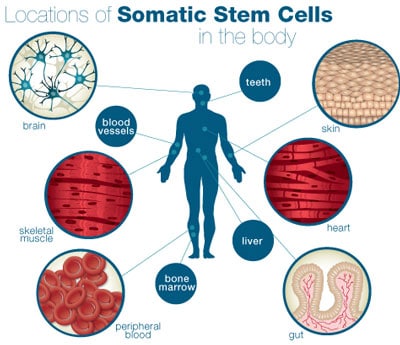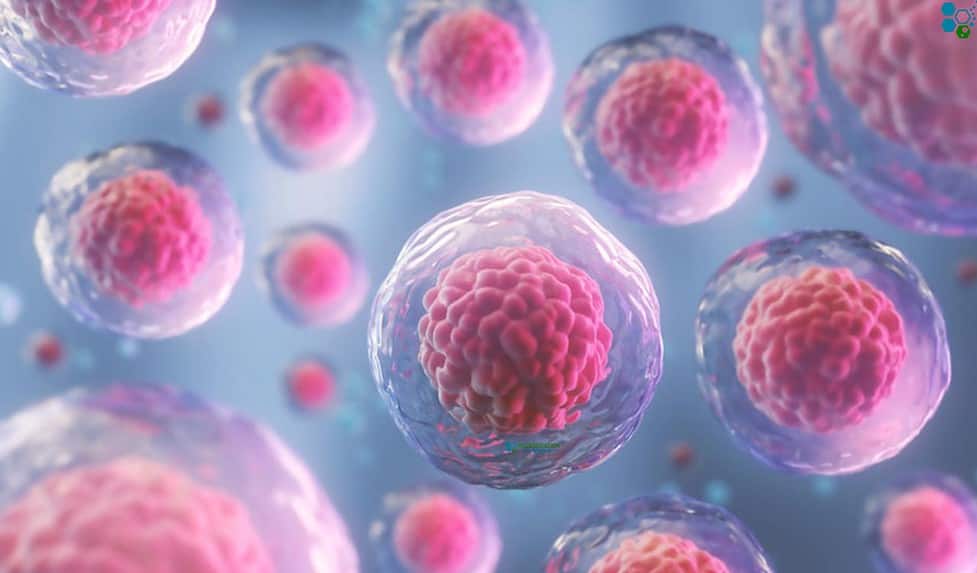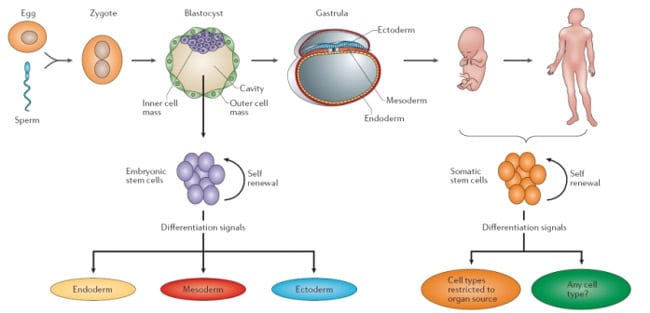Embryonic and Adult stem cells or somatic stem cells are two of the most common sources of bio-engineered cell based regenerative medicine today. Adult “post-natal” stem cells are sometimes referred to as somatic stem cells.
Somatic Stem Cell Transplants
The main function of somatic stem cells in your body is to maintain tissue health or “homeostasis” by making sure your body naturally replenish damaged cells in the process known as senescence. Your body’s repair is mediated and controlled by your stem cells. Adult stem cells or somatic stem cells along with other types of stem cells derived from placenta,cord blood,embryos are all believed to have the capability to self-renew and regulate themselves along with the remarkable ability to differentiate into any type of specialized cell types in your body such as blood,tissue,bone,skin cells etc. The potential for somatic stem cells to trans-differentiate is the foundation for the treatments we offer at the Regeneraration Center. Your somatic stem cells have very important implications and applications in our regenerative medicine techniques. somatic derived stem cells have been used to treat a wide variety of illnesses and ranging from tissues and organs including the liver,lungs, brain, heart, and even external epithelial tissues such as skin grafts to heal burns and accident scars.
The process of deriving somatic cells and embryonic stem cells are very different. Our treatments primarily used autologous somatic stem cells or matched donated allogeneic derived stem cells 

The fusion of egg and sperm gametes during conception initiates the human fertilization cycle where the diploid zygote initiates a multi-stage process of cellular divisions that ultimately results in a multi-cellular human embryo. The next stage of the cycle is called a “blastocyst” and is characterized by the distinct presence of a outer and inner cell mass known as a “blastocyst cavity.”
Embryonic stem cells are generally derived exclusively from the inner cell of the blastocyst cell. Embryonic stem cells are extremely powerful and are fully capable of self-renewal and can also differentiate into all cell types from the mesoderm, ectoderm and endoderm lineages.
Somatic stem cells are also present in many fetus and post-natal tissues such as liver cells,bone marrow,adipose fat,peripheral blood and even teeth. Like embryonic derived stem cells, somatic or adult derived “post-natal” stem cells are also very capable of self-renewing and differentiating into other cell types and lineages although not the extent and uncontrollable nature of embryonic derived stem cells. Motor neuron stem cells and functional medicine for cognitive decline are the most widely used lines of stem cells in the treatment for Diabetes,cerebral palsy,heart disease,and stem cell transplants for kidney disease.
To learn more about adult somatic stem therapies at the Regeneration Center please contact us today.


